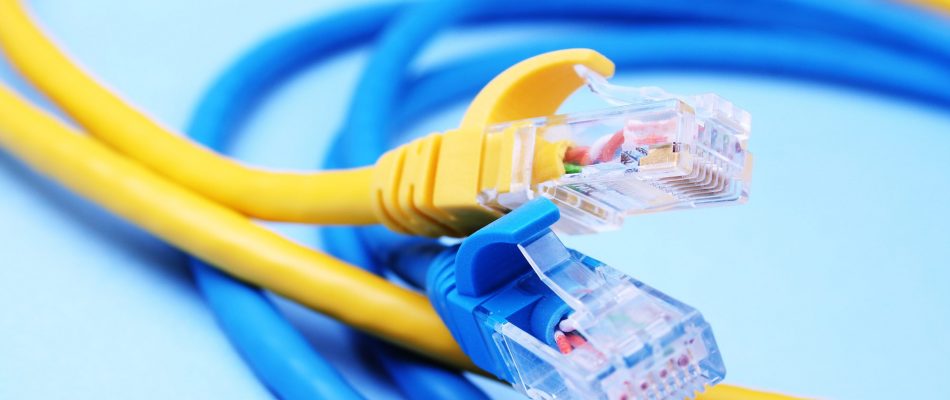There is often a lot of confusion among the buyers of Ethernet cables.
A big one is between Cat5e and Cat6 cables, which are popular twisted-pair cables commonly used for the network and telecommunication needs of businesses worldwide.
Today, we will discuss and mitigate any confusions you may have regarding these two particular Ethernet cables in our buying guide for Cat5e and Cat6 cables.
If you live in or around Jacksonville, always remember to consult the professionals at Communications Solutions Inc. for the best business networking, structured cabling, and Ethernet cable solutions in Florida.
Twisted-Pair Cables
As mentioned, Cat5e and Cat6 Ethernet cables are popular twisted-pair cables. A basic twisted-pair cable consists of two insulated strands of copper wire twisted around each other. There are often multiple twisted-pair wires in a protected Ethernet cable, and their twisted nature mitigates interference from other pairs and external sources.
These cables have two basic types:
- Unshielded Twisted-Pair (UTP)
- Shielded Twisted-Pair (STP)
The “shielding” of twisted-pair cables further mitigates interferences and strengthens the cable.
Cat5e or Cat6 Twisted-Pair Cable?
The big confusion for most buyers when it comes to choosing between Category 5e and Category 6 cables is that they are misled to think that the latter provides a full gigabit network. However, this is not always true.
To have a full gigabit network, every component of the network must be gigabit rated. If even a single component does not meet the gigabit rating, the entire network suffers since a network only runs as fast as its slowest component.
A good quality Cat5e cable can touch gigabit speeds but, it is not rated as such because it cannot be certified for gigabit use. On the other hand, Cat6 Ethernet cables are specifically designed for gigabit usage and are also certified to provide gigabit speeds to a network.
The choice between these two cables boils down to whether or not you want to pay extra for little to no obvious improvements in your network speeds and performance. Unless all your equipment is gigabit rated or you plan to upgrade, spending the extra money on Cat6 cables does not make sense.
For most businesses, Cat5e cables make better sense. These cables are highly capable, readily available, and cost between 10-20 percent less than Cat6 cables. This does not include the cost of upgrading older network equipment to meet the gigabit rating of Cat6.
Of course, Cat6 is better than Cat5e and can provide you better speeds and network performance. However, unless you need the upgrade, it is not worth the extra money.
The average business owner or consumer is unaware of the actual benefits and is often influenced by others to purchase Cat6 for its gigabit speeds. The reality is that your Cat6 cable will perform at slower speeds unless your equipment is also gigabit rated.
Hence, you need to consult experts like Communication Solutions Inc. in Jacksonville, Florida, to understand the complete requirements and performance of your business network.
Buying Guide for Cat5e and Cat6 Cables
Here are a few key things to consider and check when you are buying Cat5e, Cat6, or any other twisted pair cable for that matter.
- Check Packaging Quality and Labels
It may sound like a basic suggestion, but you need to check that the packaging of your cable’s box is in good condition. Often fake cables have bad packaging quality, and this is a great way to determine the cable’s quality by simply looking at its box.
High-quality, original Ethernet cables will always be perfectly packed, and their packaging quality is your first indicator. Moreover, they will often have an anti-fake label on the box as well. Manufacturers use these labels to distinguish their original products from fakes in the markets.
- Check the Printing on Outer Layers
The outer layer of a good Cat5e or Cat6 cable will often have some key details printed on it. Things like performance standards, manufacturer, cable category, country of origin, and length are details typically present on quality, authentic Ethernet cables.
- Feel the Outer Layer
The quality of the Ethernet cable can often be judged by feeling it. The outer layer of fake or low-quality cables feels rough and sticky to the touch because the manufacturer cuts corners on materials to save costs.
A high-quality Cat5e and Cat6 cable’s outer layer should feel smooth and clean. They may also feel fuller than low-quality, fake cables. However, you may only be able to judge this by comparison.
- Check Color Quality
Another great way to check the authenticity and quality of Cat5e and Cat6 cables is to open the outer layer and check the color of the twisted pairs inside. They may be blue, green, orange, or brown. However, the particular color is not as important as the quality of the color.
Fake cable manufacturers often dye these colors on the cables to save production costs. You must ensure that the colors are clear and not dyed on the cables.
- Check Twisting Density
Twisting density is important for the smooth performance of twisted-pair cables because it helps reduce interference and “crosstalk.” Each pair in a cable is twisted counter-clockwise, and each pair in a cable has a different twisting density from the other pairs.
This is specifically done to avoid internal crosstalk between the twisted pairs of the same cable. Always check the twisting density to ensure the Ethernet cable meets the standards for optimal network performance.
Conclusion
When installing network cabling or structured cabling for any business, you need to consider the future needs of the business. There should be room for expansion, and this is why opting for more advanced cabling solutions than what you currently need is always a good idea.
This is one reason to opt for Cat6 cables over Cat5e because it avoids replacing or reinstalling costs. However, if your business needs are fully met and exceeded by the performance of a Cat5e cable, there is no need for the upgrade, and you can safely opt for them.
Follow our buying guide for Cat5e and Cat6 cables, and you should have no trouble choosing the right category and cables for your business.
Although, every business is different, and it is always recommended to consult professionals and experts regarding cabling solutions. We highly recommend Communications Solutions Inc. for the best advice and guidance from industry experts in Jacksonville, Florida.
If you want to learn more about buying Cat5e and Cat6 cables, or about the best business networking, structured cabling, or Ethernet cabling solutions in Jacksonville, Florida, Contact Us Today.



